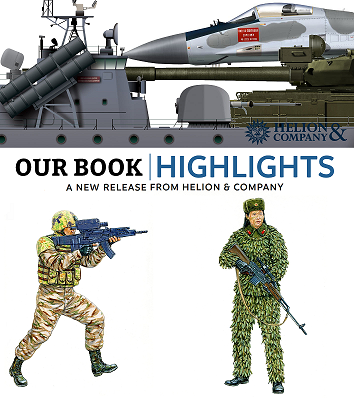By Stijn Mitzer and Joost Oliemans
The profileration of unmanned combat aerial vehicles (UCAVs) has accelerated since the turn of the century, with many countries either already possessing armed drones or currently looking to acquire them. Much less common however is the acquisition of UCAVs by a non-state actor. Intriguingly, this is exactly what has happened in Iraq, where the Popular Mobilisation Units (PMU) have managed to acquire several Mohajer-6s UCAVs from Iran. Their public appearance in Iraq came several months before the delivery of Mohajer-6s to Ethiopia, which is a story we broke in early August.
The acquisition of Mohajer-6s by the PMU is especially unusual given that the Iraqi government currently has no operational UCAV systems of its own. Having acquired some twenty CH-4Bs from China in 2015, eight of these crashed within a timespan of just a few years, while the dozen remaining examples are currently languishing in a hangar due to an apparent lack of spare parts and after-sale support by the Aviation Industry Corporation of China (AVIC). [1] [2]
Evidently, the Iraqi military set the bar low for any non-state actor to overtake it in armed drone capabilities. Host country to one of the strongest militias in the world, the supply of UCAVs to the PMU could well have occurred with the displeased consent of the Iraqi government. The PMU has meanwhile grown out to a conventional military equipped with tanks, artillery, drones and MANPADS. Many of these weapons systems were supplied by Iran, and have allowed the PMU to overtake the Iraqi Army in capabilities in several areas.
PMU forces in Iraq operate several more types of UAVs, including the 'Samad' that has also been supplied to Houthi militants in Yemen as well as Hizbullah in Lebanon, and that was used over Syria by Iranian forces in addition to seeing service in Iran itself. Suffice it to say that the profileration of Iranian UAVs in the Middle East has evidently bypassed the control of governments in these countries. Although there currently is little government control to speak of in Yemen, the governments of Lebanon and Iraq likely looked on with sorrow as Iranian-backed militias quickly overtook them in drone capabilities.
Arguably just as interesting as the Mohajer-6s is the presence of a small type of loitering munition that also appears to have joined the ranks of the PMU. In Iraq loitering munitions have been used against U.S. forces currently still deployed in the country, and more recently during a strike on the U.S. consulate in Erbil, Iraqi Kurdistan. [4] Although this was the first sighting of this particular type, which thus can't be linked to a known Iranian design, there is in fairness little doubt of its Iranian origin.
With militias playing stronger roles than ever in the post-Arab Spring world, it is a surprising fact that some now even manage to operate fleets of U(C)AVs and loitering munitions. As of yet there appears little use for the Mohajer-6s however, with deployments against remaining U.S. forces in Iraq unlikely before they pull out from the country by the end of 2021. [5] One obvious raison d'être for these militiamen's combat drones would be for use against a future Islamic State resurgence or other factions that could pose a threat to the PMU; it is especially notable that the militia in question now has UCAVs but not the host nation.
The Iraqi military will certainly look to reestablish this capability themselves. Owing to negative experiences with the CH-4B, it might look at an entirely different country for the acquisition of such a capability together. An obvious candidate would be Turkey, whose Bayraktar TB2s have already seen significant action over northern Iraq against PKK forces entrenched here – TB2s which have an impressive serviceability rate that is sure to be a welcome change for the Iraqi Air Force. Indeed, the Iraqi defence minister Juma Inad was quoted in one piece as saying they have reached consensus with Turkey to purchase an undisclosed number of TB2 drones in late August. [6]
[2] Iraq’s Air Force Is At A Crossroads https://www.forbes.com/sites/pauliddon/2021/05/11/iraqs-air-force-is-at-a-crossroads
[3] Iraqi militias parade Iranian UAV https://www.janes.com/defence-news/news-detail/iraqi-militias-parade-iranian-uav
[4] Iraq: explosive drones target area near US consulate in Erbil https://www.thenationalnews.com/mena/iraq/iraq-explosive-drones-target-area-near-us-consulate-in-erbil-1.1249277
[5] Biden announces end of combat mission in Iraq as he shifts US foreign policy focus https://edition.cnn.com/2021/07/26/politics/joe-biden-iraq/index.html







 15 T-55:
15 T-55:  15 T-72B:
15 T-72B:  18 Type 89A APC:
18 Type 89A APC: 







 12x A-29B light attack aircraft:
12x A-29B light attack aircraft:  14x Mi-8/Mi-17 transport helicopter:
14x Mi-8/Mi-17 transport helicopter: 























































 Saudi Arabia: 20
Saudi Arabia: 20 United Arab Emirates: 11
United Arab Emirates: 11 Austria: 7
Austria: 7 South Africa: 4
South Africa: 4 Turkey: 3
Turkey: 3  Italy: 1
Italy: 1

 92 T-72:
92 T-72:  12 T-72:
12 T-72:  1 T-55:
1 T-55: 




































 Mohajer-6 = 1
Mohajer-6 = 1  Qatar [2019]
Qatar [2019] Libya [2019]
Libya [2019] Azerbaijan [2020]
Azerbaijan [2020] Turkmenistan [2021]
Turkmenistan [2021] Morocco [2021]
Morocco [2021] Poland [2022]
Poland [2022] Iraq
Iraq  Kazakhstan
Kazakhstan Bulgaria
Bulgaria Hungary
Hungary Albania
Albania Latvia
Latvia  Oman
Oman Pakistan
Pakistan















